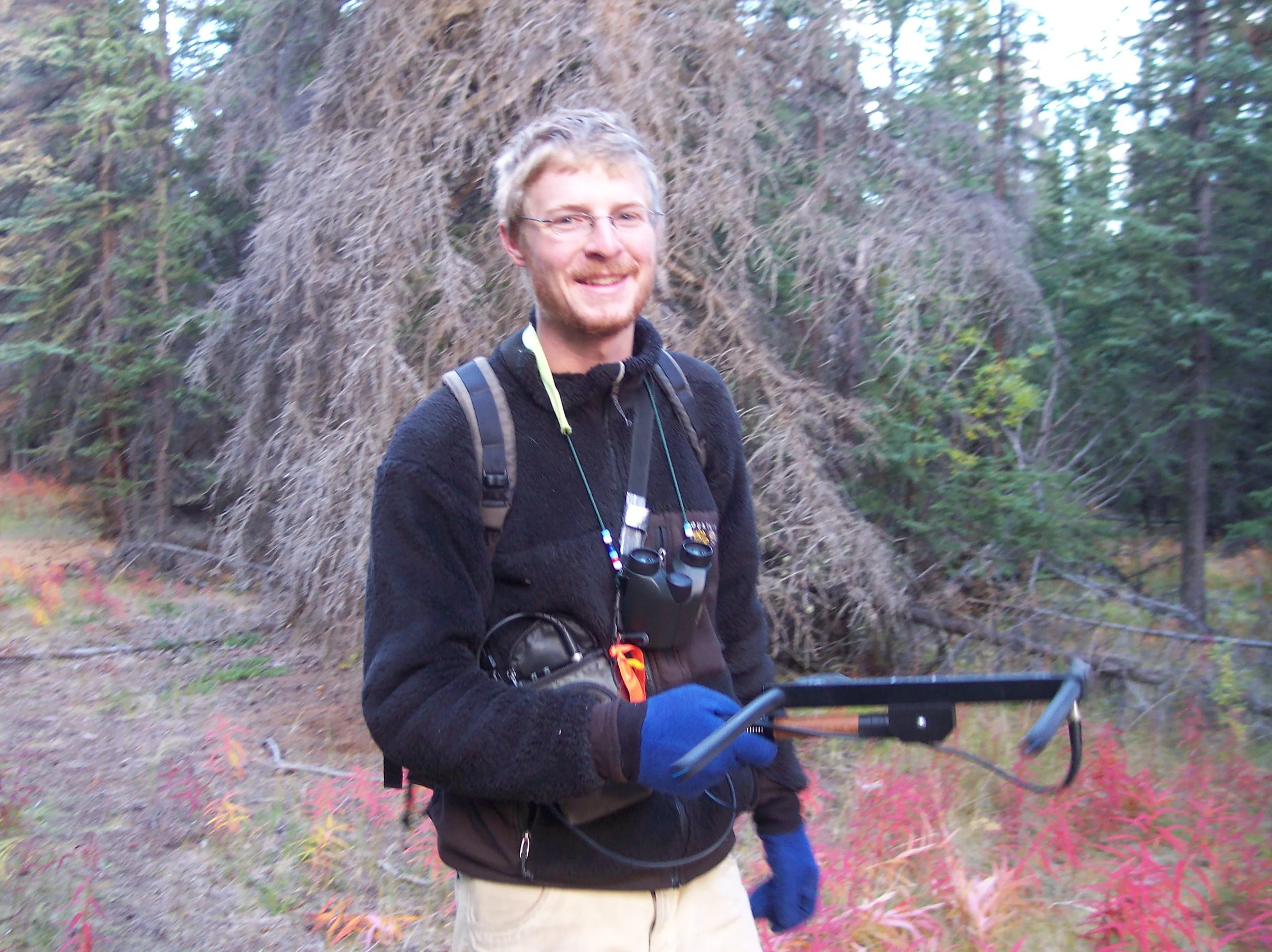Tools that we use for studying red squirrels
Ear tags
Every squirrel that we follow in the population is given two permanent ear tags. Each metal tag has a unique number etched onto it that allows us to easily distinguish each squirrel from every other squirrel in the study. These tags are vital to much of the research being done but require having the squirrel in hand in order to read the number.
In order to identify the squirrels from a distance so we can minimize handling of the animals, we also attach small coloured wires to the tags in unique combinations that can easily be seen as the squirrel runs past a technician. Much like bird bands this acts as a way of naming each squirrel as the colour in the left ear over the colour in the right ear.
Opportunistic Observations
A lot of information can be collected simply by watching individuals from a distance. Every time a squirrel is seen in the forest, we record who it is, what it was doing, where it was, and when we saw it. With every technician collecting this information over the course of the season, we can amass thousands of observations per year.
This large amount of data can provide us with key information about the squirrels in the project like how diet changes through the year, where the territory boundaries are between each squirrel, and how big each territory is.
Radio Transmitters
Sometimes we want to find and follow specific individuals when we go out into the forest. This can include when we want to figure out in which of the many nests owned by a female, she is keeping her babies. In these situations we rely on radio transmitters which we attached to the individual as a collar. These transmitters emit a very high frequency beep that neither us or the squirrels can hear, but that can be picked up, or heard, by a special receiver. Using a directional antenna attached to the receiver we can determine use triangulation to determine where the squirrel is in the forest to the precision of a tree.





